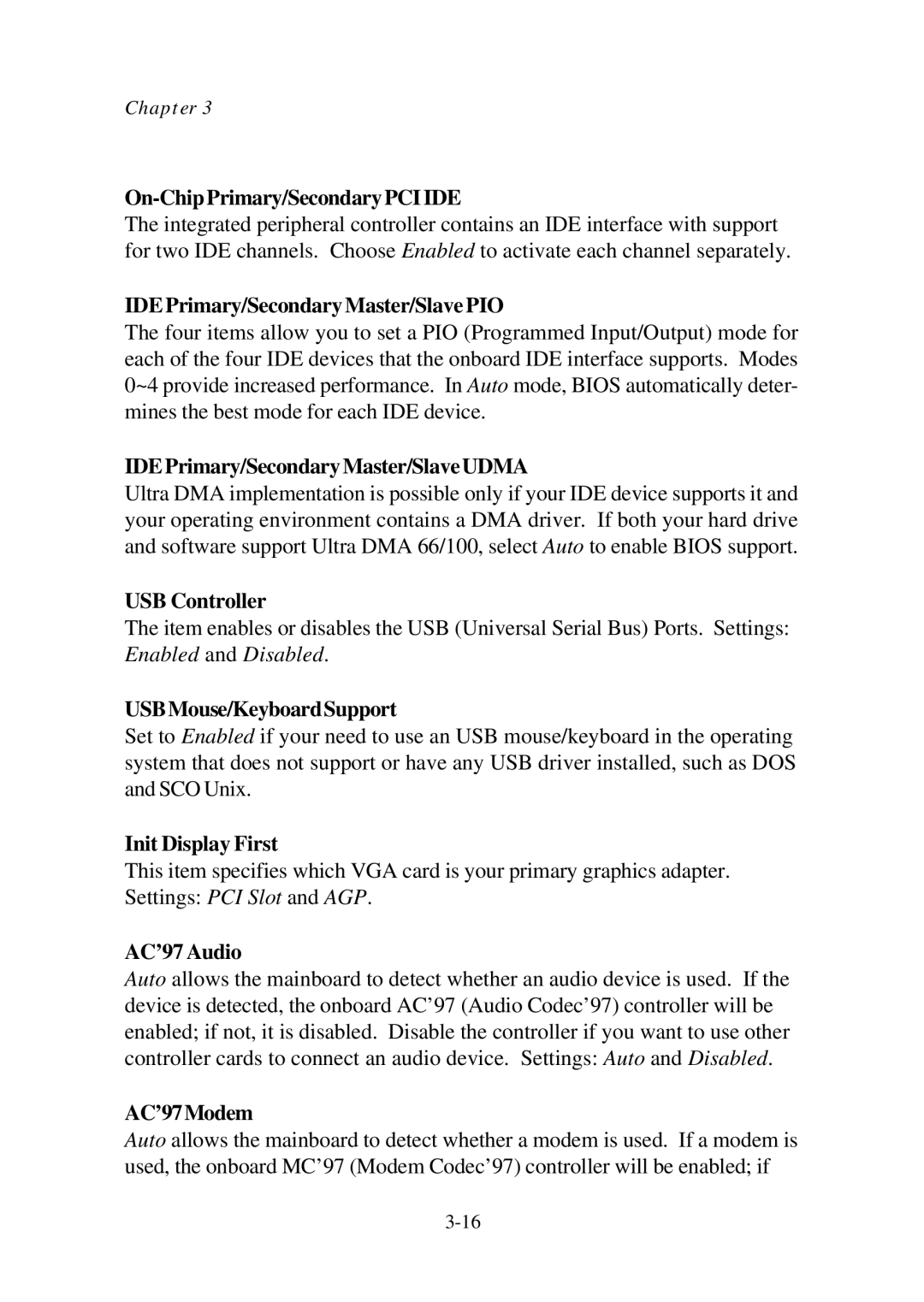Chapter 3
On-ChipPrimary/SecondaryPCIIDE
The integrated peripheral controller contains an IDE interface with support for two IDE channels. Choose Enabled to activate each channel separately.
IDE Primary/Secondary Master/Slave PIO
The four items allow you to set a PIO (Programmed Input/Output) mode for each of the four IDE devices that the onboard IDE interface supports. Modes 0~4 provide increased performance. In Auto mode, BIOS automatically deter- mines the best mode for each IDE device.
IDEPrimary/SecondaryMaster/SlaveUDMA
Ultra DMA implementation is possible only if your IDE device supports it and your operating environment contains a DMA driver. If both your hard drive and software support Ultra DMA 66/100, select Auto to enable BIOS support.
USB Controller
The item enables or disables the USB (Universal Serial Bus) Ports. Settings: Enabled and Disabled.
USBMouse/KeyboardSupport
Set to Enabled if your need to use an USB mouse/keyboard in the operating system that does not support or have any USB driver installed, such as DOS and SCO Unix.
Init Display First
This item specifies which VGA card is your primary graphics adapter. Settings: PCI Slot and AGP.
AC’97 Audio
Auto allows the mainboard to detect whether an audio device is used. If the device is detected, the onboard AC’97 (Audio Codec’97) controller will be enabled; if not, it is disabled. Disable the controller if you want to use other controller cards to connect an audio device. Settings: Auto and Disabled.
AC’97Modem
Auto allows the mainboard to detect whether a modem is used. If a modem is used, the onboard MC’97 (Modem Codec’97) controller will be enabled; if
